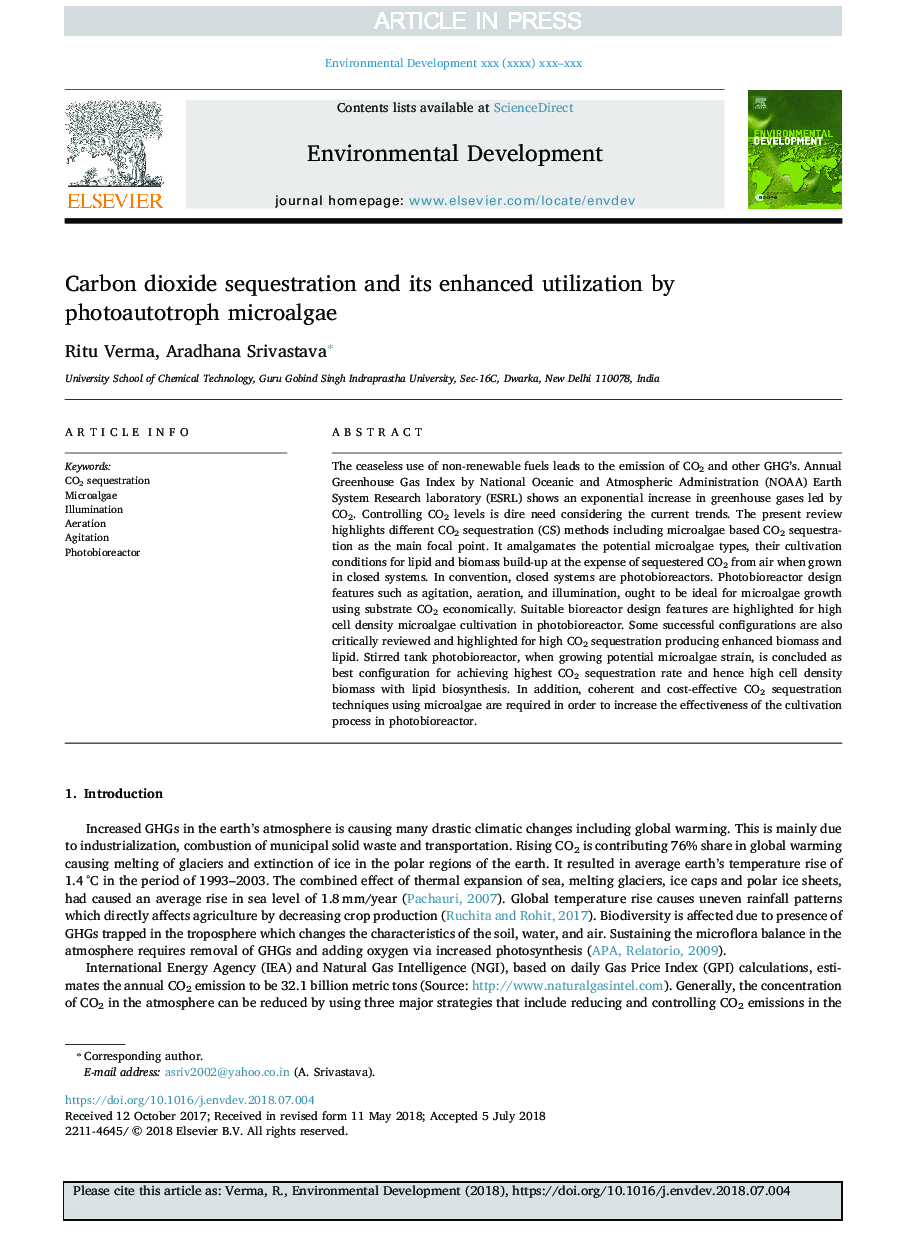| Article ID | Journal | Published Year | Pages | File Type |
|---|---|---|---|---|
| 10223374 | Environmental Development | 2018 | 12 Pages |
Abstract
The ceaseless use of non-renewable fuels leads to the emission of CO2 and other GHG's. Annual Greenhouse Gas Index by National Oceanic and Atmospheric Administration (NOAA) Earth System Research laboratory (ESRL) shows an exponential increase in greenhouse gases led by CO2. Controlling CO2 levels is dire need considering the current trends. The present review highlights different CO2 sequestration (CS) methods including microalgae based CO2 sequestration as the main focal point. It amalgamates the potential microalgae types, their cultivation conditions for lipid and biomass build-up at the expense of sequestered CO2 from air when grown in closed systems. In convention, closed systems are photobioreactors. Photobioreactor design features such as agitation, aeration, and illumination, ought to be ideal for microalgae growth using substrate CO2 economically. Suitable bioreactor design features are highlighted for high cell density microalgae cultivation in photobioreactor. Some successful configurations are also critically reviewed and highlighted for high CO2 sequestration producing enhanced biomass and lipid. Stirred tank photobioreactor, when growing potential microalgae strain, is concluded as best configuration for achieving highest CO2 sequestration rate and hence high cell density biomass with lipid biosynthesis. In addition, coherent and cost-effective CO2 sequestration techniques using microalgae are required in order to increase the effectiveness of the cultivation process in photobioreactor.
Related Topics
Life Sciences
Environmental Science
Ecology
Authors
Ritu Verma, Aradhana Srivastava,
